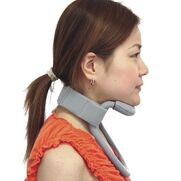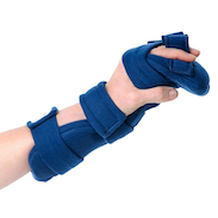When muscles weaken, people living with ALS may find it harder to hold their head up, raise their arms, or lift their feet. Without additional support, muscles can stiffen and daily activities can become more difficult and painful.
Braces, also known as orthoses, can help you stay safe, have more energy, and experience less pain and discomfort.
If you notice that it is getting more challenging, or taking more effort, to walk or do other daily activities, contact your ALS clinic or neurologist to ask about braces and other interventions.
This guide covers the three most common types of braces recommended for ALS:
If you notice that it is getting more challenging, or taking more effort, to walk or do other daily activities, contact your ALS clinic or neurologist to ask about braces and other interventions.
This guide covers the three most common types of braces recommended for ALS:
Neck BracesA neck brace, or cervical collar, can help support your neck and head if your muscles are weakened. |
Hand and Wrist BracesHand and wrist braces and splints can provide the extra support you need for fine motor activities. |
Ankle Foot BracesAn ankle foot brace, often referred to as an AFO, can help you walk with greater stability, efficiency, and safety. |
It can be hard to accept that you may need additional support, and adjusting to wearing a brace can be challenging. But getting the brace you need—sooner rather than later—can increase your energy level, help you remain more independent, help keep you safe, and improve your overall quality of life.
Most of these braces are covered by Medicare, Medicaid, and private insurance.
Most of these braces are covered by Medicare, Medicaid, and private insurance.





